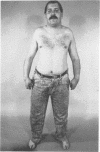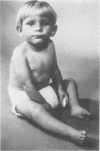Abstract
We report a man and his son with congenital limb contractures, limitation of ocular movements, and an electroretinal abnormality. They appear to have an autosomal dominant form of arthrogryposis, distinguishable from other previously classified forms of this disorder.
Full text
PDF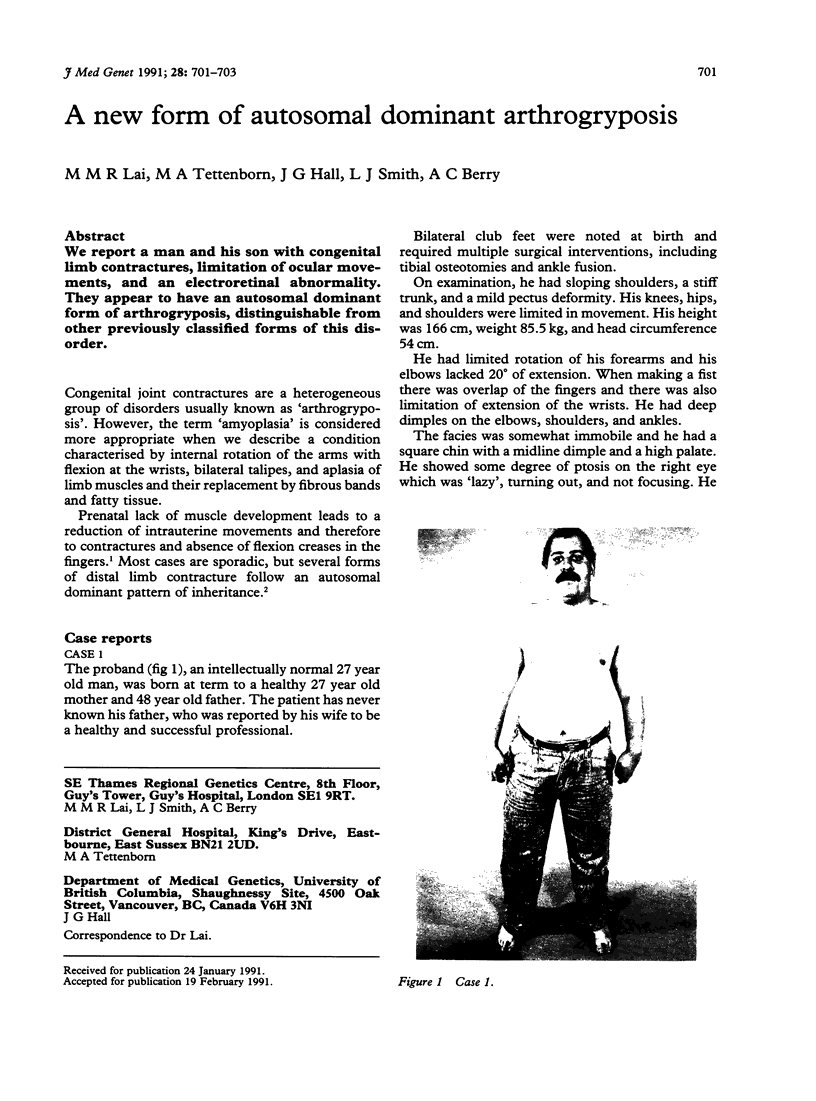
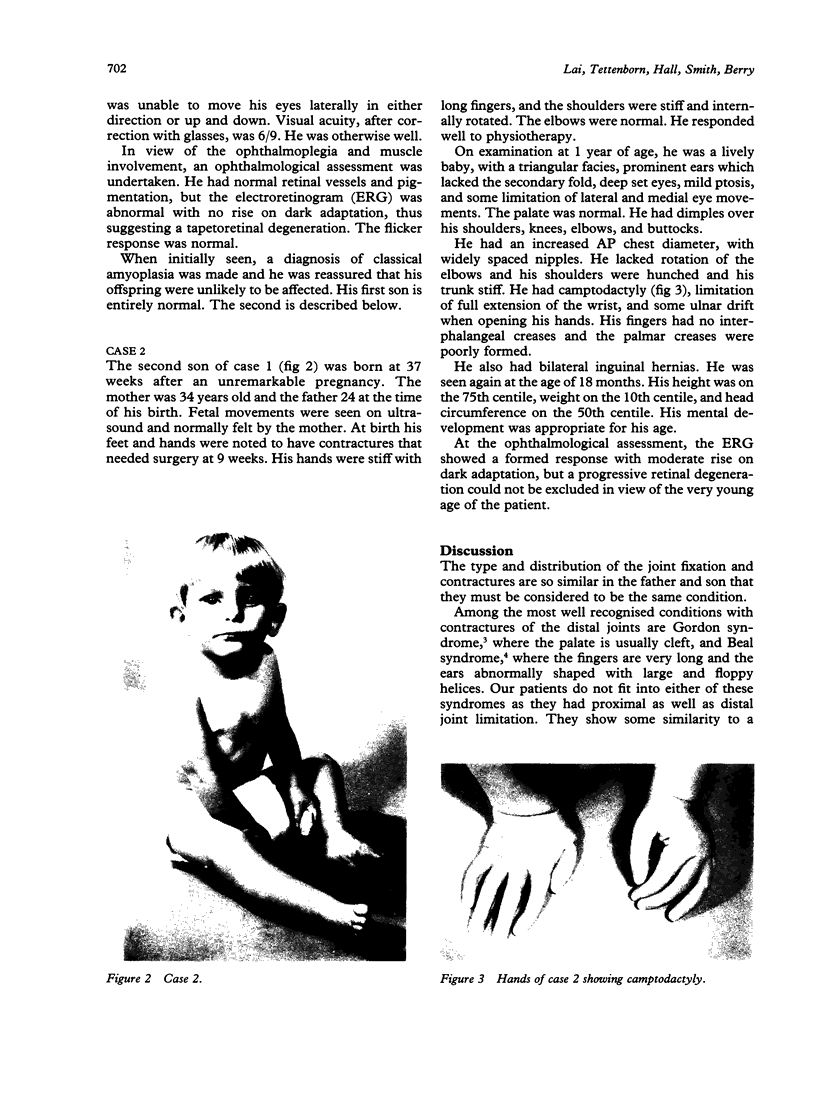
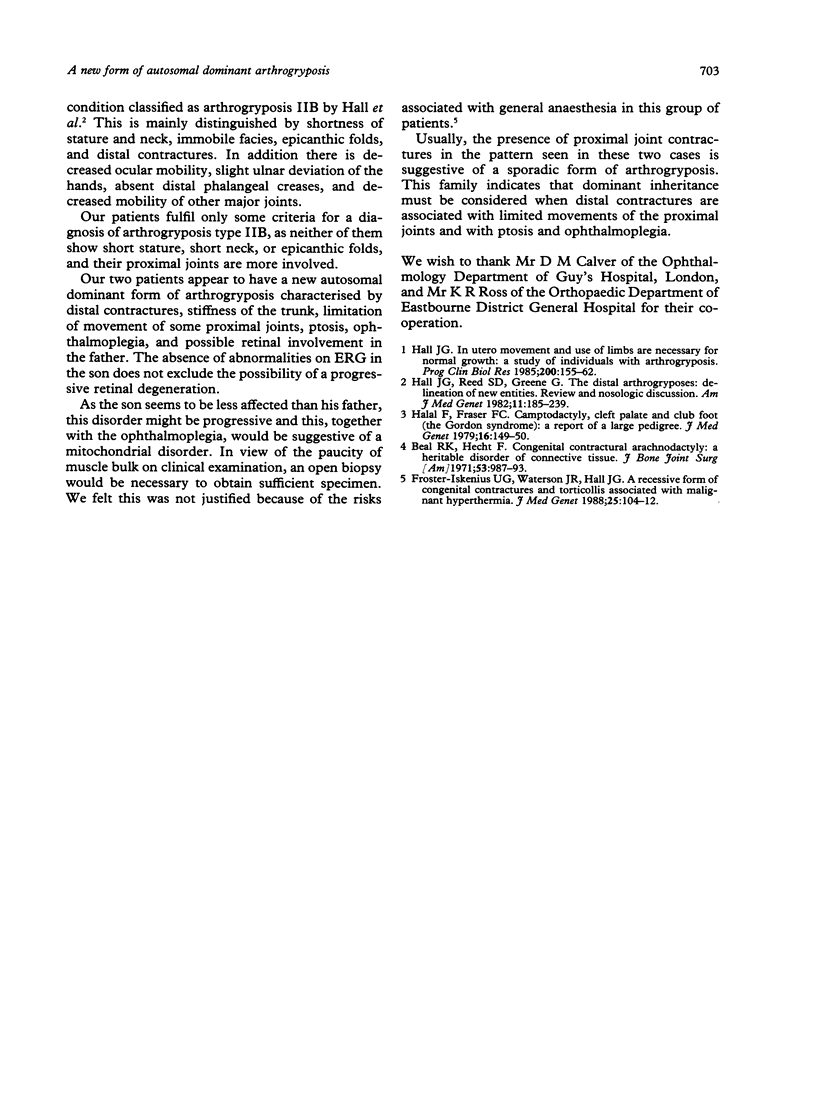
Images in this article
Selected References
These references are in PubMed. This may not be the complete list of references from this article.
- Beals R. K., Hecht F. Congenital contractural arachnodactyly. A heritable disorder of connective tissue. J Bone Joint Surg Am. 1971 Jul;53(5):987–993. [PubMed] [Google Scholar]
- Froster-Iskenius U. G., Waterson J. R., Hall J. G. A recessive form of congenital contractures and torticollis associated with malignant hyperthermia. J Med Genet. 1988 Feb;25(2):104–112. doi: 10.1136/jmg.25.2.104. [DOI] [PMC free article] [PubMed] [Google Scholar]
- Halal F., Fraser F. C. Camptodactyly, cleft palate, and club foot (the Gordon syndrome). A report of a large pedigree. J Med Genet. 1979 Apr;16(2):149–150. doi: 10.1136/jmg.16.2.149. [DOI] [PMC free article] [PubMed] [Google Scholar]
- Hall J. G. In utero movement and use of limbs are necessary for normal growth: a study of individuals with arthrogryposis. Prog Clin Biol Res. 1985;200:155–162. [PubMed] [Google Scholar]
- Hall J. G., Reed S. D., Greene G. The distal arthrogryposes: delineation of new entities--review and nosologic discussion. Am J Med Genet. 1982 Feb;11(2):185–239. doi: 10.1002/ajmg.1320110208. [DOI] [PubMed] [Google Scholar]



